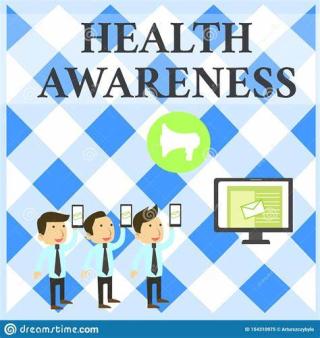Increase in Invasive Group A Streptococcus Cases in Vermont

Increase in Invasive Group A Streptococcus Cases in Vermont
The Vermont Department of Health has observed a significant increase in invasive group A Streptococcus cases in 2023. Patients with physical skin breakdown are highly susceptible to streptococcal infections of the affected area. Improved management of skin breakdown and early recognition of skin infections could prevent subsequent invasive infections in these patients.
BACKGROUND
Group A Streptococcus (GAS), or Streptococcus pyogenes, is a bacterium that can cause a range of infections, from pharyngitis to life-threatening septic shock. Invasive group A Streptococcus (iGAS) is defined as isolation of GAS from either a normally sterile site such as blood or cerebrospinal fluid, or a wound accompanied by necrotizing fasciitis or streptococcal toxic shock syndrome. CDC estimates that up to 2,300 people die annually in the United States due to iGAS.
In 2023, 144 cases of iGAS were reported to the Health Department. This incidence rate of 22.3 cases per 100,000 Vermont residents is a 467% increase compared to the four-year, pre-COVID average (3.9 cases per 100,000 residents per year). Common risk factors among the 2023 cases include presence of chronic wounds, use of injection drugs, coinfection with hepatitis C, and unstable housing.
The 2023 cases reflected a shift to a younger patient population with more cases in the 35-49 years age group than any other. In comparison, the largest proportion of cases in prior years occurred in the 65 years and older age group. Invasive cases among those aged 65 years and older also increased, especially for those with risk factors that include chronic wounds associated with diabetes and peripheral vascular disease. The increase among the 35-49 years age group appears to be caused by wounds associated with drug use and housing insecurity rather than chronic health conditions.
This increase coincides with the emergence of xylazine, a veterinary sedative not approved for use in humans, in the U.S. illegal drug supply. Xylazine use in humans has been a contributing cause of fatal overdoses and has been associated with the development of distinct skin wounds with necrosis. These wounds may manifest at injection sites or elsewhere and can occur even when the drug is smoked or snorted. Xylazine-associated wounds typically start as purple or red blisters eventually developing into painful ulcers with scabbing. The mechanism of these wounds is unclear, but it is likely multifactorial involving both vasoconstriction and extravasation resulting in decreased skin perfusion which subsequently impairs wound healing.
Prevention
Awareness of prevention measures, effective wound care, and early recognition of skin infections are crucial for reducing morbidity associated with iGAS infection among patients who use drugs and/or are experiencing unstable housing. Health care providers should connect patients presenting with wounds who report drug use to harm reduction services, such as syringe service programs, VT Helplink, medication-assisted treatment, and, if needed, social workers for housing supports. Educating patients at risk for iGAS infection on good skin care, general hygiene, safe injection practices, and early signs and symptoms of infection could also help to prevent iGAS infections.
REQUESTED ACTIONS
- Avoid dehumanizing and stigmatizing language. Use first-person language instead; for example, say “person living with a substance use disorder” rather than “drug addict”.
- Provide harm reduction messaging to all patients with substance use disorder to reduce the occurrence of new wounds; for example, keep injections sites clean, use sterile supplies every time, rotate injection sites, avoid injecting into or near existing wounds.
- If drug use is a presented risk, offer both HIV and hepatitis C testing.
- Educate patients who use drugs on ways to care for wounds. Wound care education should include these key messages:
- Wash your hands frequently with soap and water. Bathe and wash clothing as regularly as possible.
- Keep wounds clean, moist, and covered. Regularly check and clean wounds at least daily with soap and water, saline or BZK wipes. Avoid using alcohol, hydrogen peroxide, or hand sanitizer as they may dry out the wounds.
- Moisturize healthy skin around the wound using petroleum jelly or a similar barrier ointment.
- Cover wounds with non-adherent dressings.
- Change dressing at least daily, especially when saturated or soiled.
- Early care with moist bandaging of new wounds can prevent progression to more serious wounds. Xylazine-associated wounds can worsen rapidly.
- Watch for signs of infection. Seek medical care for signs of localized infection (purulent drainage or odor, redness, warmth, swelling). Antibiotics might be needed.
- Seek emergency medical care immediately for signs of more severe systemic infection (fever, chills, unexplained nausea or vomiting, or rapidly worsening redness or pain).
- Take all antibiotics as prescribed by your health care provider, even if you start to feel better. Do not share antibiotics with others.
ADDITIONAL RESOURCES
- Group A Strep Infections – VDH (includes iGAS Data Brief)
- VT Helplink alcohol and drug support services
- Vermont Syringe Service Providers - VDH
- Xylazine Involvement in Fatal Opioid Overdoses Among Vermont Resident - VDH
- Active Bacterial Core Interactive Data Dashboard – CDC
- Xylazine Resources – CDC
- Summary of Information on The Safety and Effectiveness of SSPs – CDC
- Xylazine-Induced Skin Ulcer - VisualDx
